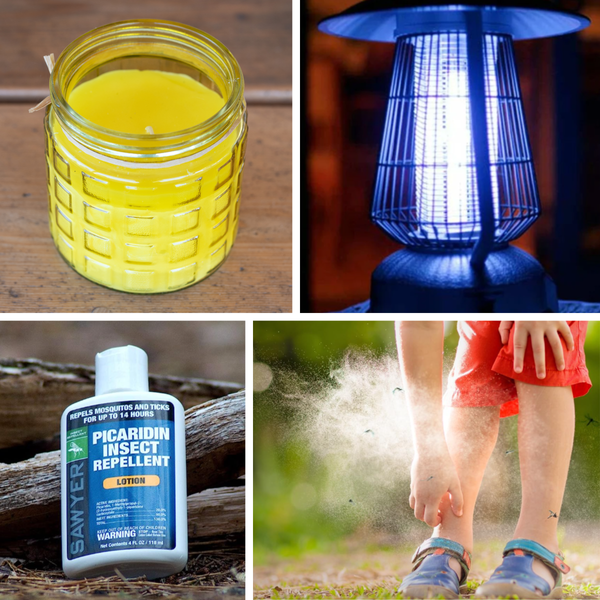Key Takeaways:
- Understand the importance of selecting a sunscreen that matches your skin type and lifestyle needs.
- Learn the differences between chemical and mineral sunscreens and their respective benefits.
- Discover how to read labels for sun protection factor (SPF) and broad-spectrum coverage to ensure adequate protection against harmful UV rays.
Sunscreen is an essential part of any skincare routine, offering protection against the sun's harmful rays, which can lead to skin aging, sun damage, and even skin cancer. With a plethora of options available, it can be overwhelming to choose the right sunscreen. This article will guide you through the process, ensuring you can make an informed decision to protect your skin effectively.
Understanding Sun Protection Factor (SPF)
When considering how to choose sunscreen, the sun protection factor, or SPF rating, is a crucial element. SPF indicates the level of protection against UVB light, the primary cause of sunburn and skin damage. A higher SPF rating means more protection, but it's important to note that no sunscreen can block 100% of UVB rays. For daily use, a broad spectrum SPF of at least 30 is recommended by the Environmental Protection Agency and cosmetic and clinical research, as it blocks about 97% of UVB rays.
Broad Spectrum Coverage: UVA and UVB Protection
Broad spectrum sunscreen offers protection against both UVA and UVB rays. UVA rays penetrate the skin more deeply and are associated with aging, while UVB rays cause sunburn. Broad spectrum coverage is essential for comprehensive protection. Look for labels that specifically mention 'broad spectrum' or that the product protects against both UVA and UVB light.
Chemical vs. Mineral Sunscreens
Chemical sunscreens absorb UV radiation and convert it into heat, which is then released from the skin. They often contain active ingredients like avobenzone or oxybenzone. On the other hand, mineral sunscreens, also known as physical sunscreens, contain zinc oxide or titanium dioxide, which physically block and scatter UV light. Mineral formulas are often recommended for sensitive or acne-prone skin due to their gentle nature.
Sunscreen for Different Skin Types
Choosing the best sunscreen for your skin type is vital. For oily skin, look for oil-free formulas that offer a matte finish to control excess shine. Dry skin benefits from moisturizing sunscreen with ingredients like hyaluronic acid. If you have sensitive skin, mineral sunscreens with zinc oxide or titanium dioxide are less likely to cause irritation. For acne-prone skin, non-comedogenic products that won't clog pores are the best choice.
Tinted Sunscreen for a Touch of Color
Tinted sunscreen can provide a dual function of sun protection and a light foundation. These products are great for those who want to even out their skin tone while protecting their skin. Tinted formulas are available in both chemical and mineral sunscreens and can cater to various skin tones.
Water Resistance for Active Lifestyles
If you lead an active lifestyle or enjoy water activities, water-resistant sunscreen is a must. Water resistance ensures that the sunscreen will stay on your skin longer, even with sweating or swimming. However, it's important to reapply sunscreen every two hours or immediately after swimming or excessive sweating, as no sunscreen is entirely waterproof.
Sunscreen Sticks, Sprays, and Lotions
Sunscreen comes in various forms, including sticks, sprays, and lotions. Sticks are convenient for targeted application, such as on the face or around the eyes. Sprays offer easy application for hard-to-reach areas, but it's important to avoid inhaling them. Lotions are the traditional form and are best for ensuring even coverage.
Sunscreen Application Techniques for Maximum Protection
When it comes to safeguarding your skin from the sun's rays, the method of applying sunscreen is just as crucial as the type of sunscreen you choose. For those with acne-prone skin, it's essential to opt for oil-free formulas that won't clog pores. Begin with a generous amount, as most people under-apply. The rule of thumb is a shot glass full for the entire body, applied 30 minutes before sun exposure. This allows the sunscreen to fully bind to your skin, providing an effective barrier against harmful UV rays.
For areas that are often missed, like the back of the neck or ears, spray sunscreens can be a game-changer. However, it's important to ensure that the spray is rubbed in evenly for consistent coverage. Reapplication is key, especially after swimming or sweating, even with water-resistant sunscreen. Remember, no sunscreen is entirely waterproof, and unprotected skin is at risk. For the face, a lotion formula or a physical sunscreen containing zinc oxide and titanium dioxide is recommended, as these sit on top of the skin and reflect UV rays.
The Evolution of Sunscreen: From Past to Present
Sunscreen has come a long way since its early days. Initially, sun protection formulas were thick, greasy, and left a noticeable white cast, particularly on darker complexions. Today, advancements in sunscreen technology have led to the development of mineral sunscreen options that blend seamlessly into the skin. These formulations often contain zinc oxide and titanium dioxide, which are less likely to irritate sensitive or acne-prone skin compared to some chemical sunscreen ingredients.
In addition to lotions and creams, the market now offers innovative formats like powder sunscreens and stick applications, providing convenience and encouraging regular use. Powder sunscreens are particularly useful for reapplication over makeup or for those with oily skin, as they can help absorb excess shine. Stick sunscreens offer precise application for areas like the hairline or around the eyes. As we continue to understand the importance of protecting our skin from direct sunlight, the sunscreen industry evolves to meet the needs of diverse skin types and lifestyles, helping to prevent skin cancer and premature aging.
The Importance of Wearing Sunscreen Daily
Wearing sunscreen daily, even on cloudy days or when indoors, is crucial for protecting your skin from UV light, which can penetrate windows. Daily sunscreen use can prevent skin aging and skin cancer. It's important to apply enough sunscreen to all exposed skin and to reapply it every two hours or after swimming or sweating.
Sunscreen for Darker Skin Tones
While darker skin naturally has more melanin, which offers some protection against sunburn, it is still vulnerable to sun damage and skin cancer. People with darker complexions should also wear sunscreen with at least SPF 30 for adequate protection.
Environmental Considerations
When choosing sunscreen, consider its impact on the environment. Some chemical sunscreens contain ingredients that can harm coral reefs. Look for products labeled as 'reef-safe' or those that do not contain oxybenzone or octinoxate, which are known to contribute to coral bleaching.
How Much Sunscreen to Apply
Applying enough sunscreen is key to effective protection. For the average adult, a shot glass-sized amount (approximately 1 ounce) is needed to cover the body. Don't forget areas like the ears, neck, and tops of feet. For the face, a nickel-sized dollop should suffice.
Sunscreen and Protective Clothing
In addition to sunscreen, wearing protective clothing, such as long-sleeved shirts, pants, wide-brimmed hats, and sunglasses, can further shield your skin from UV radiation. Look for clothing with an ultraviolet protection factor (UPF) rating for added protection.
Reading Sunscreen Labels
Understanding sunscreen labels can help you choose the right product. Look for key terms like 'broad spectrum,' 'water-resistant,' and the SPF rating. Also, check the expiration date, as sunscreen loses its effectiveness over time.
The Role of Cosmetic Dermatology
Cosmetic dermatology can offer guidance on choosing the right sunscreen, especially for those with specific skin concerns. Dermatologists can recommend products based on the latest cosmetic and clinical research and your individual needs.
Sunscreen for Children
Children's skin is more sensitive, so it's important to choose a sunscreen suitable for their delicate skin. Mineral sunscreens are often recommended for children, and it's crucial to apply sunscreen to any exposed skin whenever they are outdoors.
Summary
Choosing the right sunscreen involves understanding SPF, broad-spectrum coverage, and the differences between chemical and mineral formulas. It's essential to select a product that matches your skin type, lifestyle, and environmental considerations. Remember to apply enough sunscreen, wear it daily, and complement it with protective clothing for the best defense against the sun's rays.
FAQ Section
Q: How often should I reapply sunscreen?
A: Sunscreen should be reapplied every two hours, or immediately after swimming, sweating, or towel drying. Even water-resistant sunscreens can wear off, so frequent reapplication is necessary for continued protection.
Q: Can I use the same sunscreen for my face and body?
A: While you can use the same sunscreen for both face and body, some people prefer to use a separate facial sunscreen, especially if they have sensitive or acne-prone skin. Facial sunscreens are often formulated to be lighter and less likely to clog pores.
Q: Is sunscreen necessary on cloudy days or when indoors?
A: Yes, sunscreen is necessary even on cloudy days and when indoors, as up to 80% of UV rays can penetrate clouds and windows. Daily sunscreen use is a key step in protecting your skin from UV damage.









